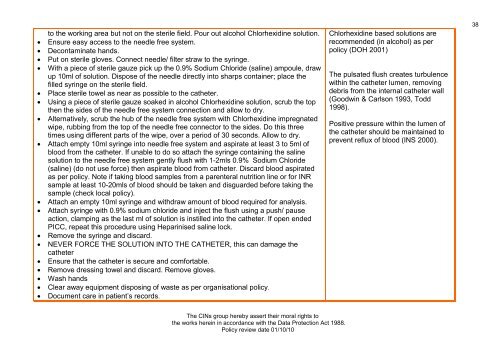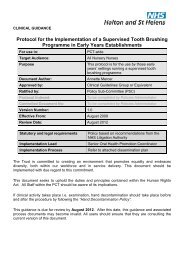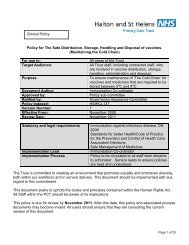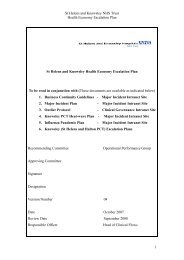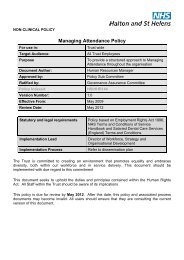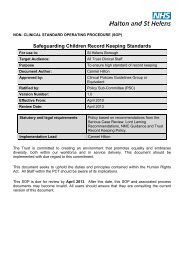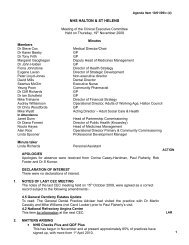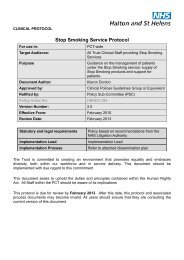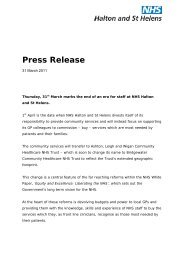Collaborative Intravenous Nursing Service (CINS) Guidelines
Collaborative Intravenous Nursing Service (CINS) Guidelines
Collaborative Intravenous Nursing Service (CINS) Guidelines
- No tags were found...
You also want an ePaper? Increase the reach of your titles
YUMPU automatically turns print PDFs into web optimized ePapers that Google loves.
to the working area but not on the sterile field. Pour out alcohol Chlorhexidine solution.• Ensure easy access to the needle free system.• Decontaminate hands.• Put on sterile gloves. Connect needle/ filter straw to the syringe.• With a piece of sterile gauze pick up the 0.9% Sodium Chloride (saline) ampoule, drawup 10ml of solution. Dispose of the needle directly into sharps container; place thefilled syringe on the sterile field.• Place sterile towel as near as possible to the catheter.• Using a piece of sterile gauze soaked in alcohol Chlorhexidine solution, scrub the topthen the sides of the needle free system connection and allow to dry.• Alternatively, scrub the hub of the needle free system with Chlorhexidine impregnatedwipe, rubbing from the top of the needle free connector to the sides. Do this threetimes using different parts of the wipe, over a period of 30 seconds. Allow to dry.• Attach empty 10ml syringe into needle free system and aspirate at least 3 to 5ml ofblood from the catheter. If unable to do so attach the syringe containing the salinesolution to the needle free system gently flush with 1-2mls 0.9% Sodium Chloride(saline) (do not use force) then aspirate blood from catheter. Discard blood aspiratedas per policy. Note if taking blood samples from a parenteral nutrition line or for INRsample at least 10-20mls of blood should be taken and disguarded before taking thesample (check local policy).• Attach an empty 10ml syringe and withdraw amount of blood required for analysis.• Attach syringe with 0.9% sodium chloride and inject the flush using a push/ pauseaction, clamping as the last ml of solution is instilled into the catheter. If open endedPICC, repeat this procedure using Heparinised saline lock.• Remove the syringe and discard.• NEVER FORCE THE SOLUTION INTO THE CATHETER, this can damage thecatheter• Ensure that the catheter is secure and comfortable.• Remove dressing towel and discard. Remove gloves.• Wash hands• Clear away equipment disposing of waste as per organisational policy.• Document care in patient’s records.Chlorhexidine based solutions arerecommended (in alcohol) as perpolicy (DOH 2001)The pulsated flush creates turbulencewithin the catheter lumen, removingdebris from the internal catheter wall(Goodwin & Carlson 1993, Todd1998).Positive pressure within the lumen ofthe catheter should be maintained toprevent reflux of blood (INS 2000).38The CINs group hereby assert their moral rights tothe works herein in accordance with the Data Protection Act 1988.Policy review date 01/10/10


